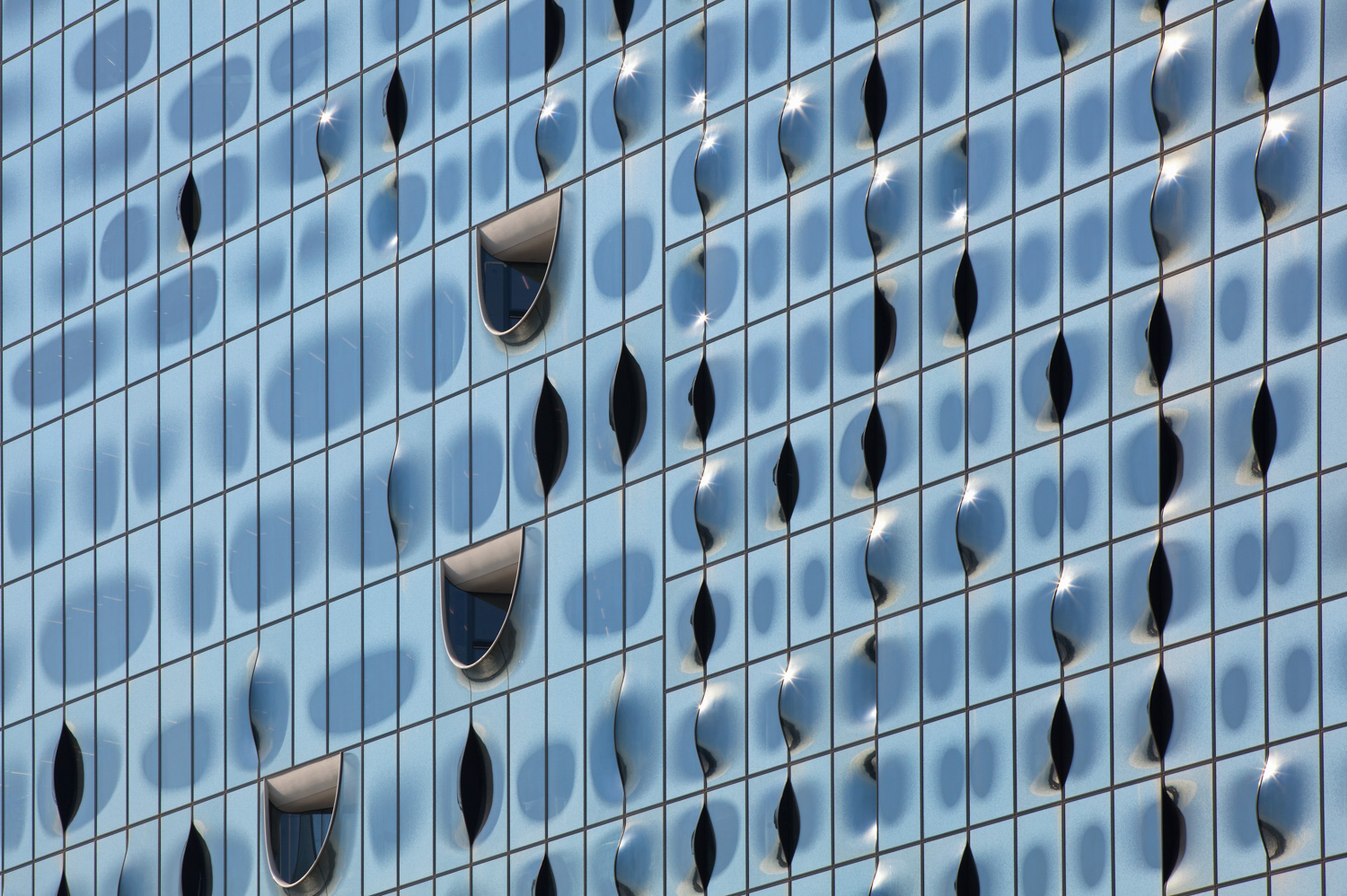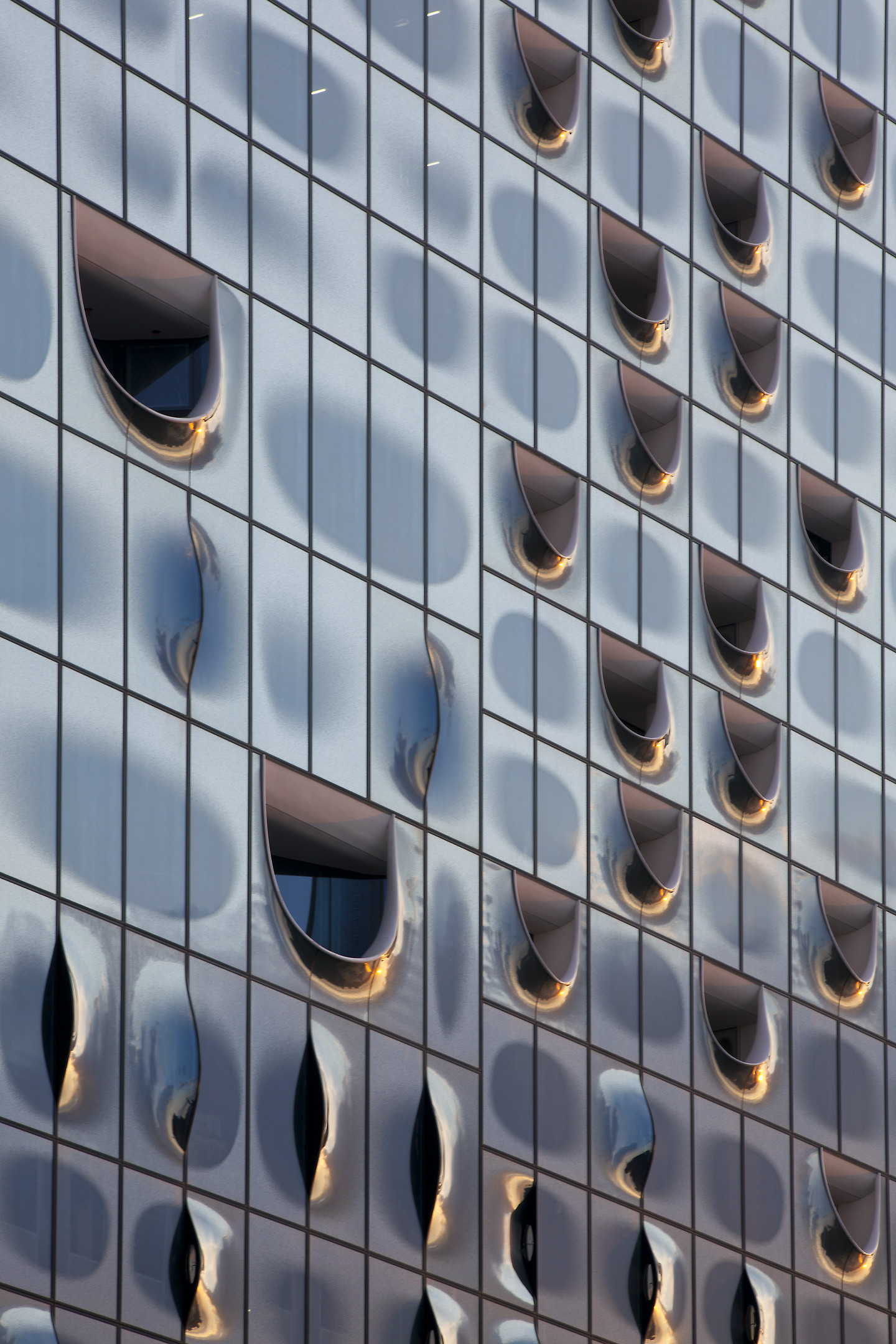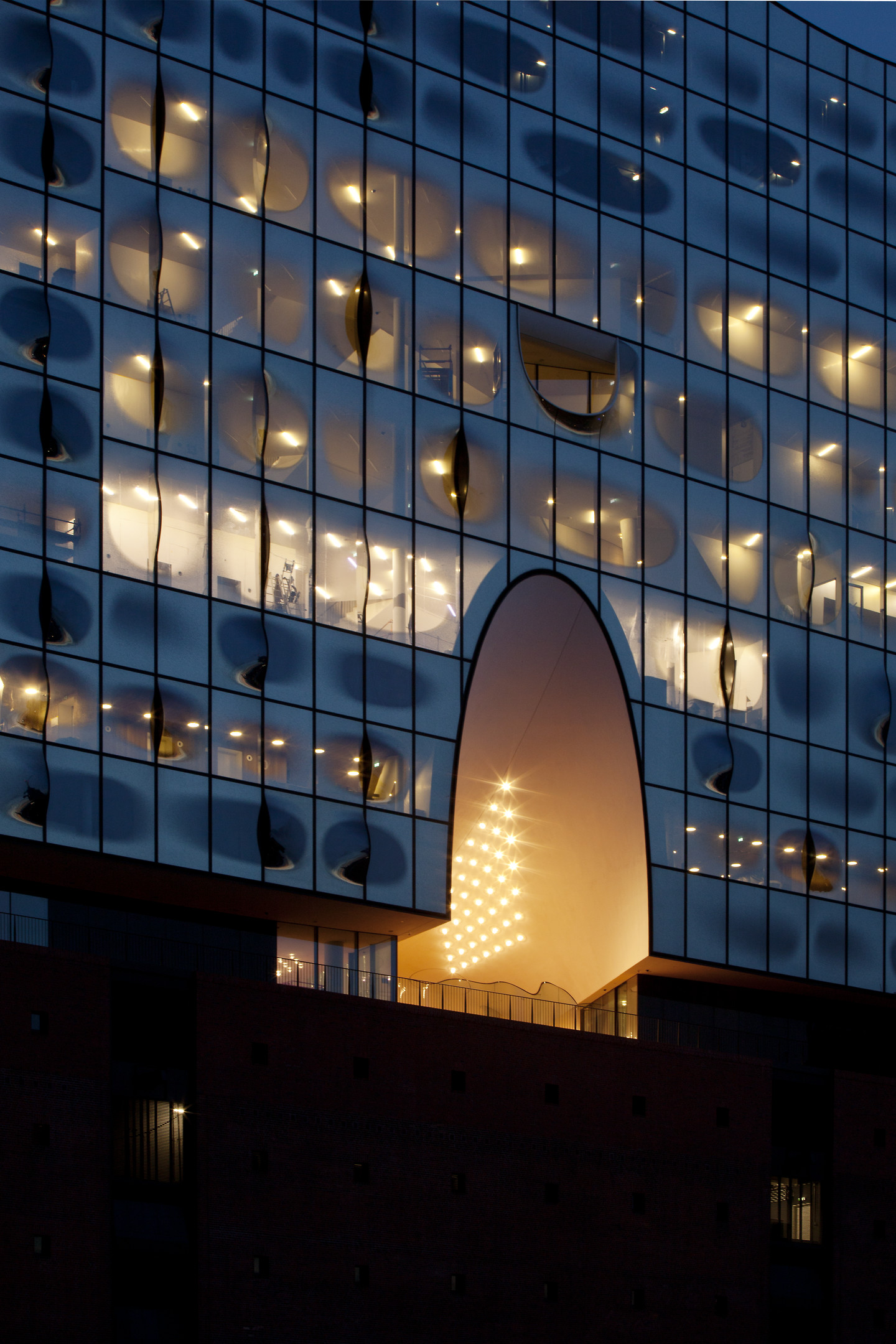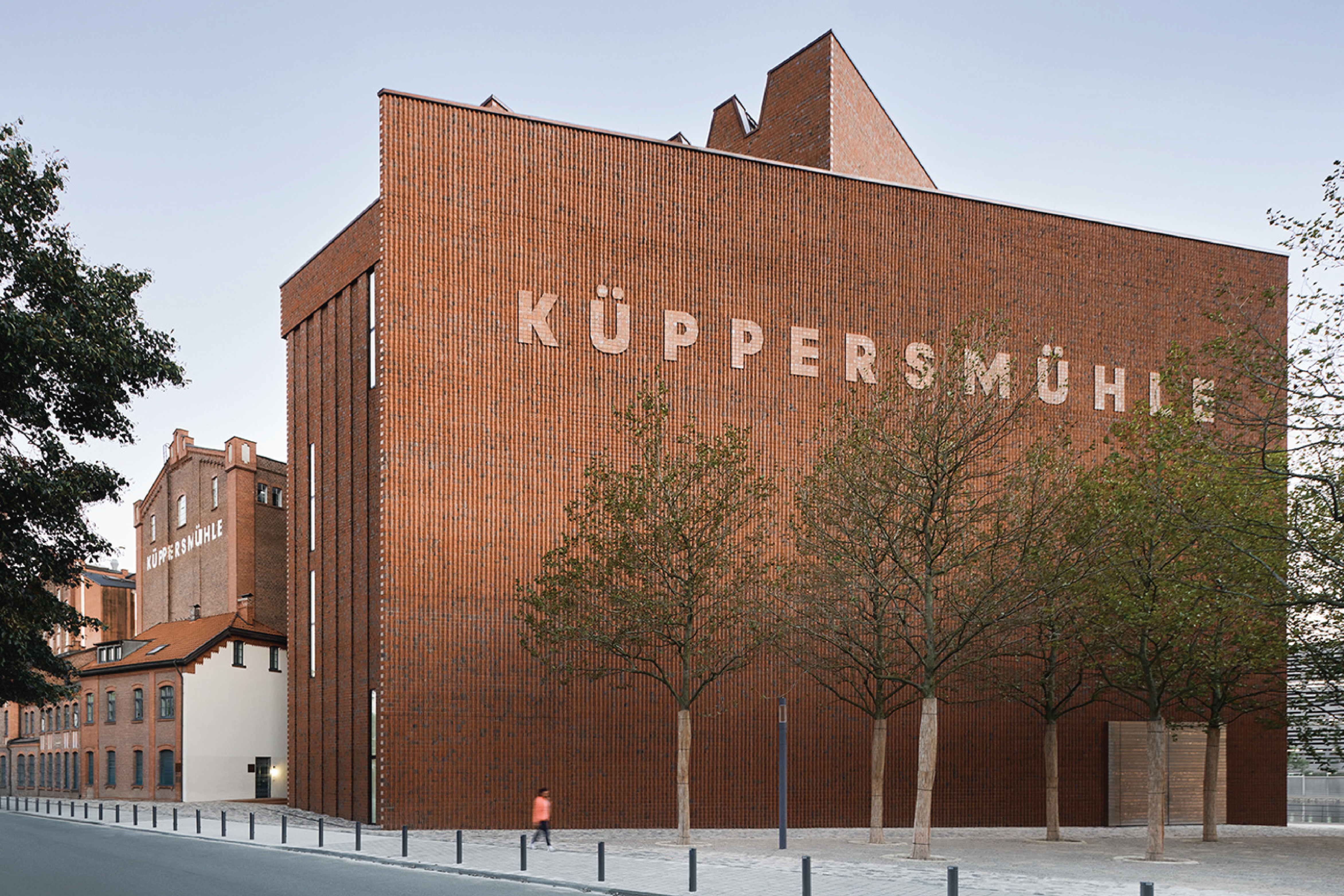Tag: Germany
ELBPHILHARMONIE HAMBURG: FAÇADE DETAILS | GUARDIAN GLASS
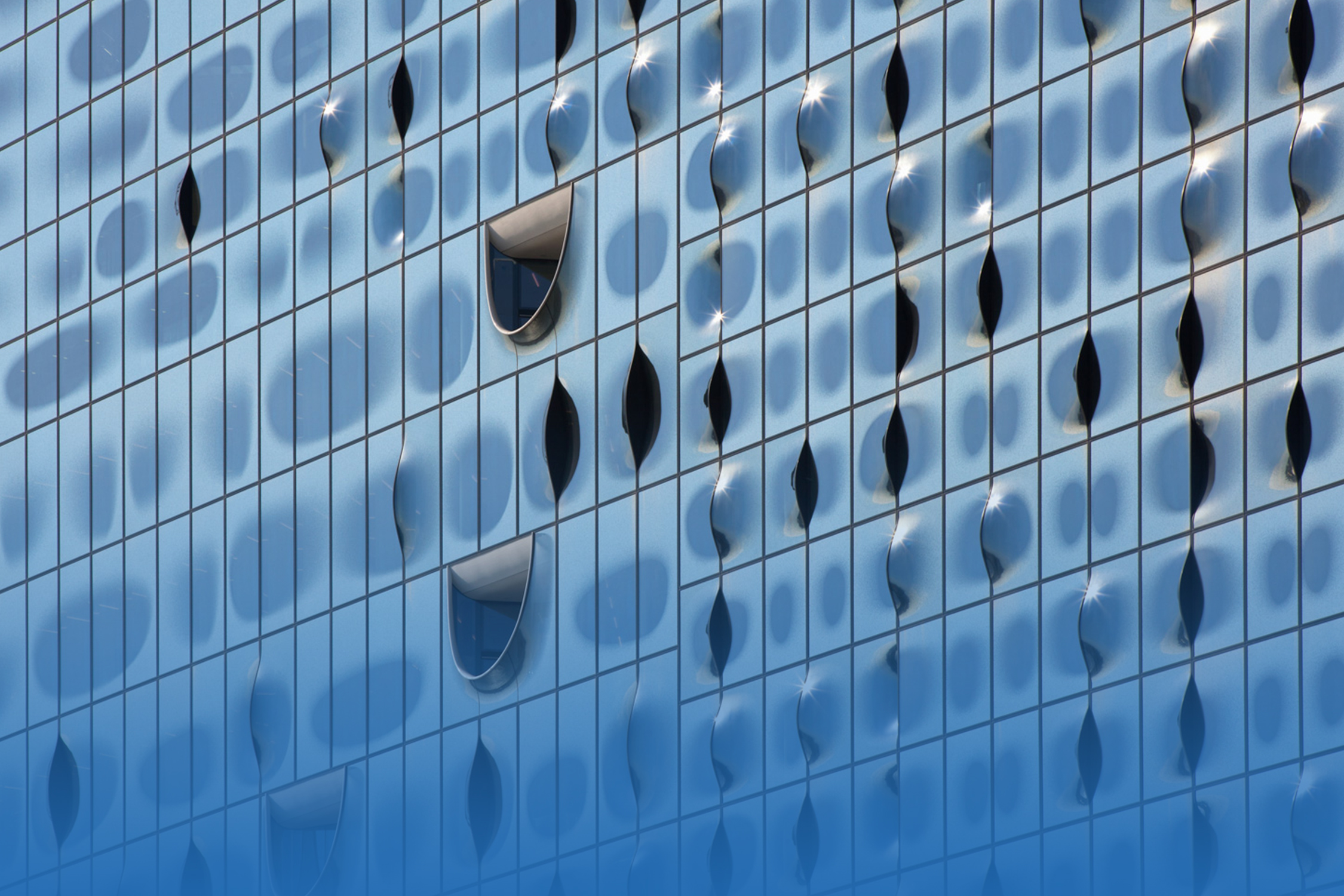 ELBPHILHARMONIE HAMBURG: FAÇADE DETAILS | GUARDIAN GLASS
ELBPHILHARMONIE HAMBURG: FAÇADE DETAILS | GUARDIAN GLASS
AFTER WALKING THROUGH THE DESIGN CONCEPT OF ELBPHILHARMONIE HAMBURG IN A PREVIOUS ARTICLE, THIS TIME WE DELVE INTO THE DETAILS OF THE BUILDING’S GLASS FAÇADE FROM GUARDIAN EXTRACLEAR®, GUARDIAN CLIMAGUARD®, AND GUARDIAN SUNGUARD® WHICH CREATES A DYNAMIC SHAPE SIMILAR TO NATURAL WAVES AND NEARBY HARBOR
TEXT: WARUT DUANGKAEWKART
PHOTO: CORDELIA EWERTH
(For Thai, press here)
The unusual-looking curved glass facade seems to be what people remember the most about Elbphilharmonie Hamburg, the project where Herzog & de Meuron transforms an old warehouse into a new landmark of the city of Hamburg. The place houses a variety of activities and establishments, from music hall, restaurants, bars, to an apartment and a hotel.
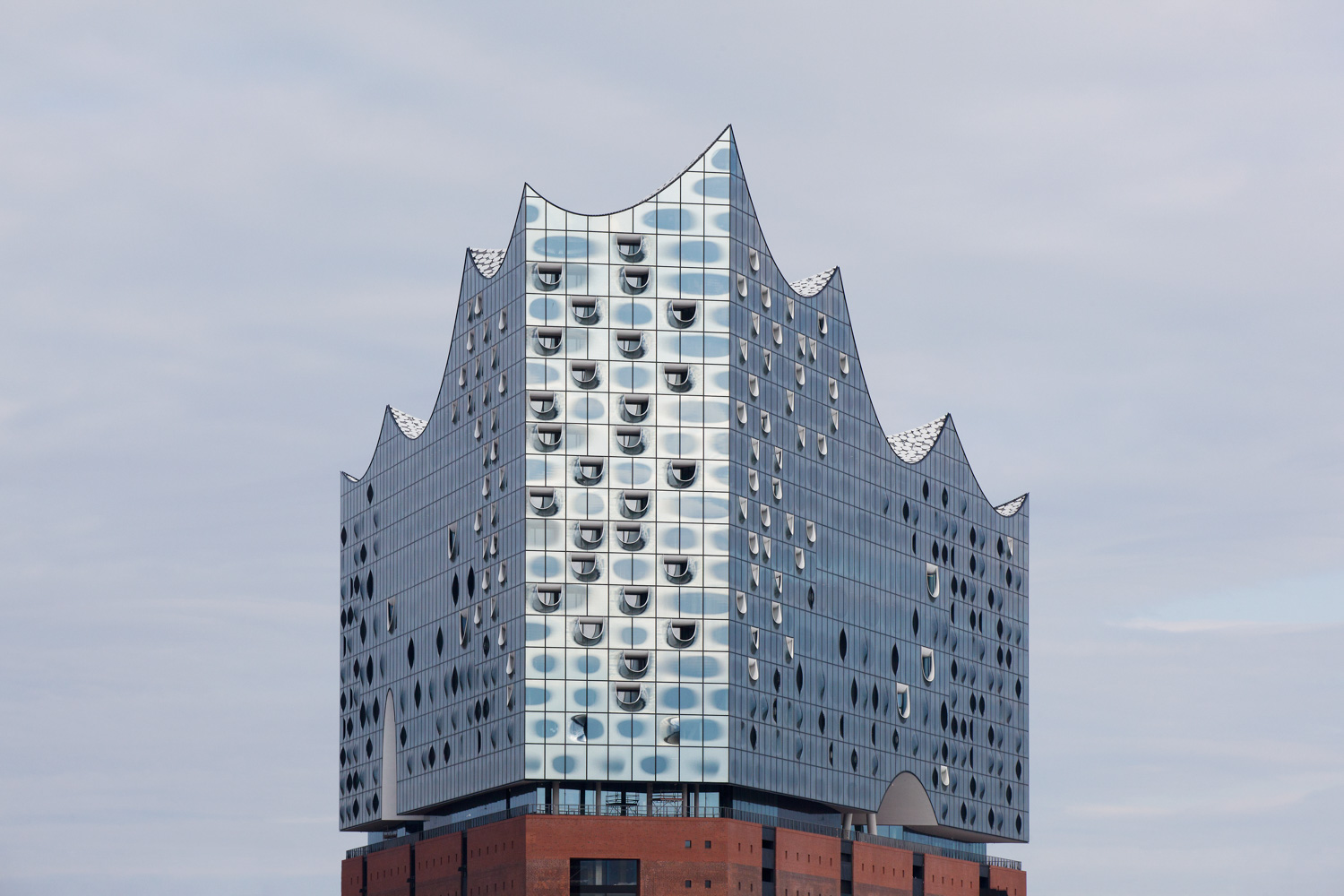 The natural attributes of rippled waves inspire the glass facade with three-dimensional form and details. With a surface area of over 21,800 square meters, the undulating surface occupies more than 5,000 square meters. The finished work is the result of the collaborative effort between the design team and Guardian Glass. The significance of the facade’s unprecedented design at the time is more than just the striking physical appearance but its ability to maintain the highest level of efficiency and quality, from strength, safety and the reduction of interior temperature.
The natural attributes of rippled waves inspire the glass facade with three-dimensional form and details. With a surface area of over 21,800 square meters, the undulating surface occupies more than 5,000 square meters. The finished work is the result of the collaborative effort between the design team and Guardian Glass. The significance of the facade’s unprecedented design at the time is more than just the striking physical appearance but its ability to maintain the highest level of efficiency and quality, from strength, safety and the reduction of interior temperature.
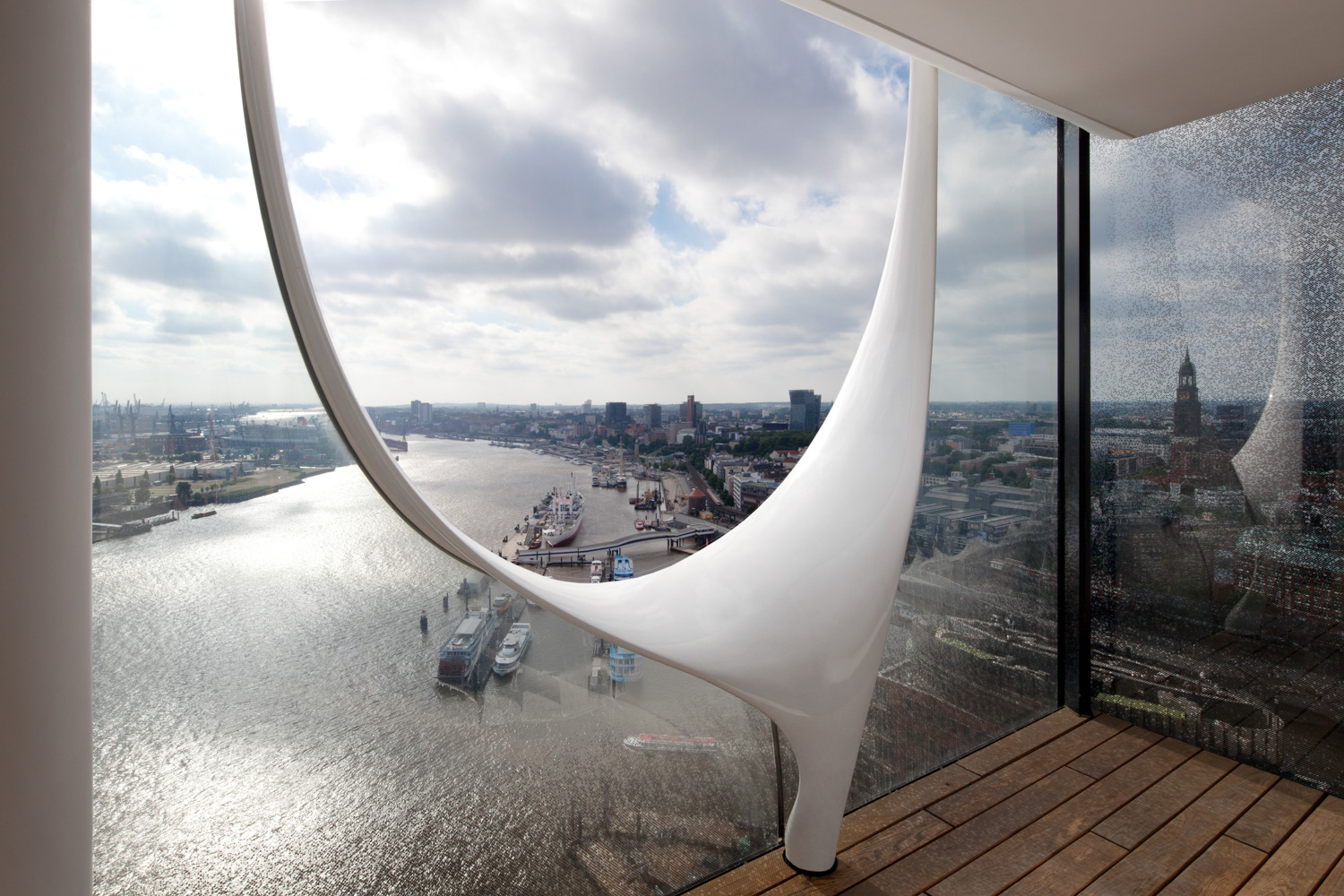
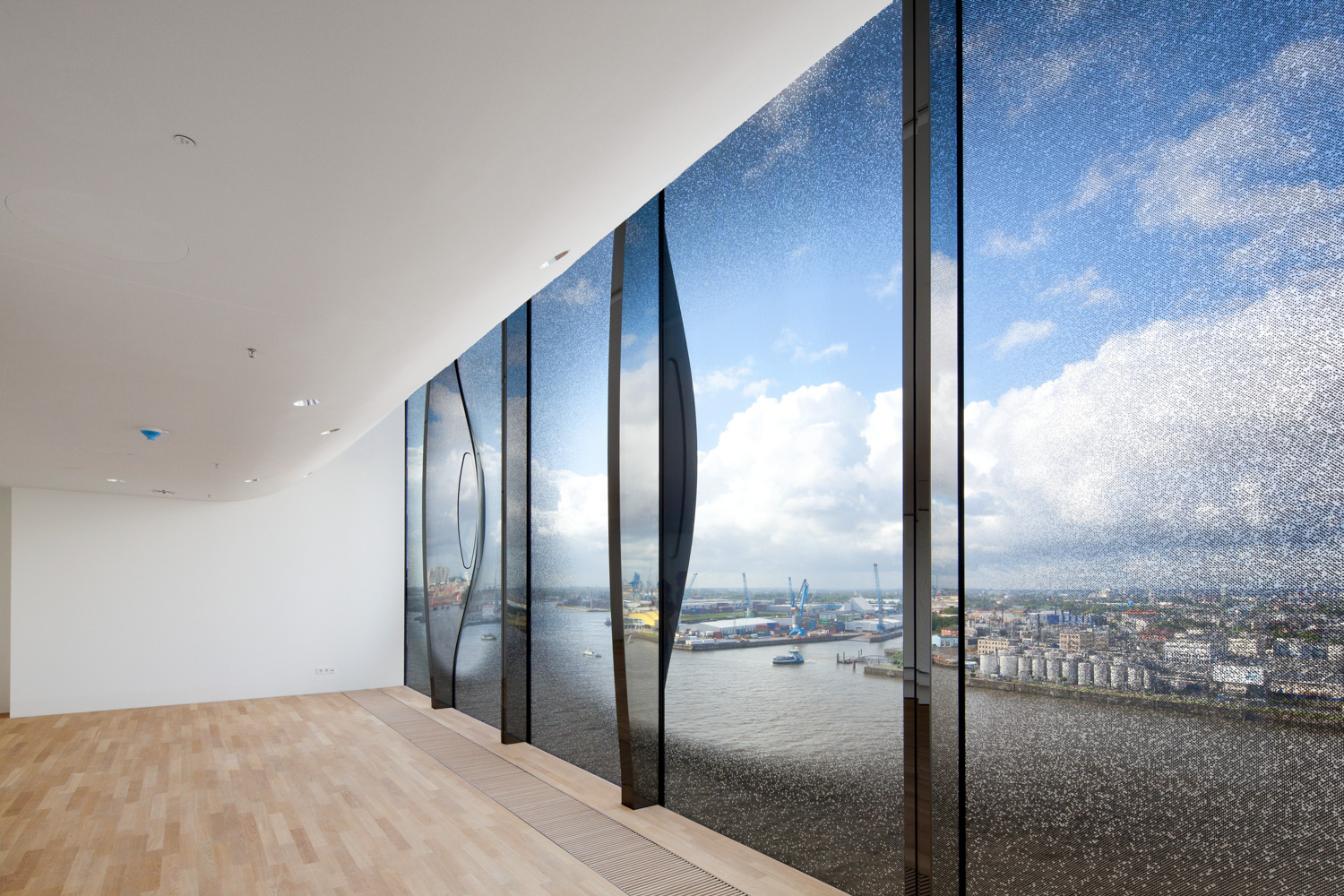
The three-layer safety glass are bent and assembled into the designed form, delivering both aesthetically appealing appearance and functional efficiency. Despite being bent into curved form, the glass from high quality manufacturing process still keeps the functional qualities of Low-E surface coating, which enhances heat control.

The glass used with the architecture of Elbphilharmonie Hamburg ranges from Guardian ExtraClear®, a transparent flat glass, which is used as the principal material for its transparency. Guardian ClimaGuard® DT, the heat insulation glass, offers high durability with efficient control of interior temperature. Guardian SunGuard® Solar Light Blue 52 is used for it is able to control the amount of sunlight from coming into the building while still maintaining a nice presence of natural light with 47% Visible Light Transmission (VLT) that filter heat transmission down to only 36%, enabling efficient temperature control and less indoor air conditioning usage.

The technologies developed and incorporated for the construction of Elbphilharmonie Hamburg building allow us to see new possibilities of how glass can be used in architectural design. With the right integration of design, and bodies of knowledge surrounding materials and manufacturing processes, one can see how the potential and landscape of architectural design and construction have been and will be broadened.
Revisited a Elbphilharmonie Hamburg previous article at

For further information you can contact our experts, by visiting us at:
Official Website / https://www.guardianglass.com/ap/en
Official Facebook / https://www.facebook.com/guardianglassap
Email / guardiansupport@guardian.com
CUBE BERLIN | GUARDIAN GLASS
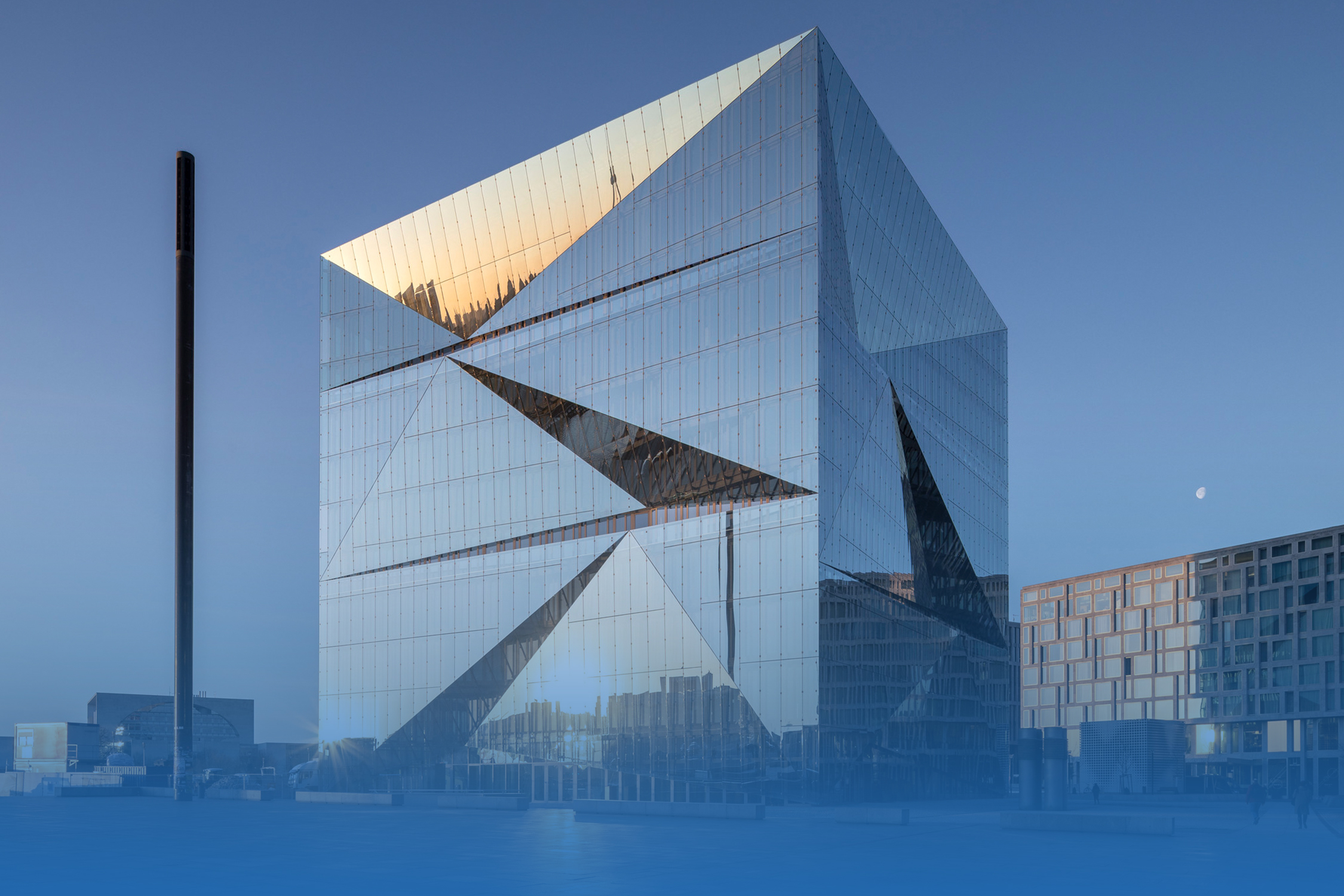
CUBE BERLIN | GUARDIAN GLASS
3XN ARCHITECTS CONCEIVED CUBE BERLIN AS A LANDMARK FOR THE URBAN NEIGHBORHOOD WITH THE INTEGRATION OF ARCHITECTURE, ART AND TECHNOLOGY TO SUSTAINABLE ENVIRONMENT, WHILE BUILDING’S FAÇADE USES CLIMAGUARD PREMIUM 2 AND SUNGUARD HIGH DURABLE DIAMOND 66 TO HOLDING A DISTINCTIVE CHARACTER AND REDUCING ENERGY CONSUMPTION SIMULTANEOUSLY
TEXT: WARUT DUANGKAEWKART
PHOTO: ADAM MØRK
(For Thai, press here)
At a public square at Berlin’s city center sits modern looking building known as Cube Berlin. With the location fronting the city’s main train station, and right next to the Spree River, the building serves a landmark for the urban neighborhood with the design that brings together an impressive combination of different sciences and disciplines from architecture, art, technology to sustainable environment.
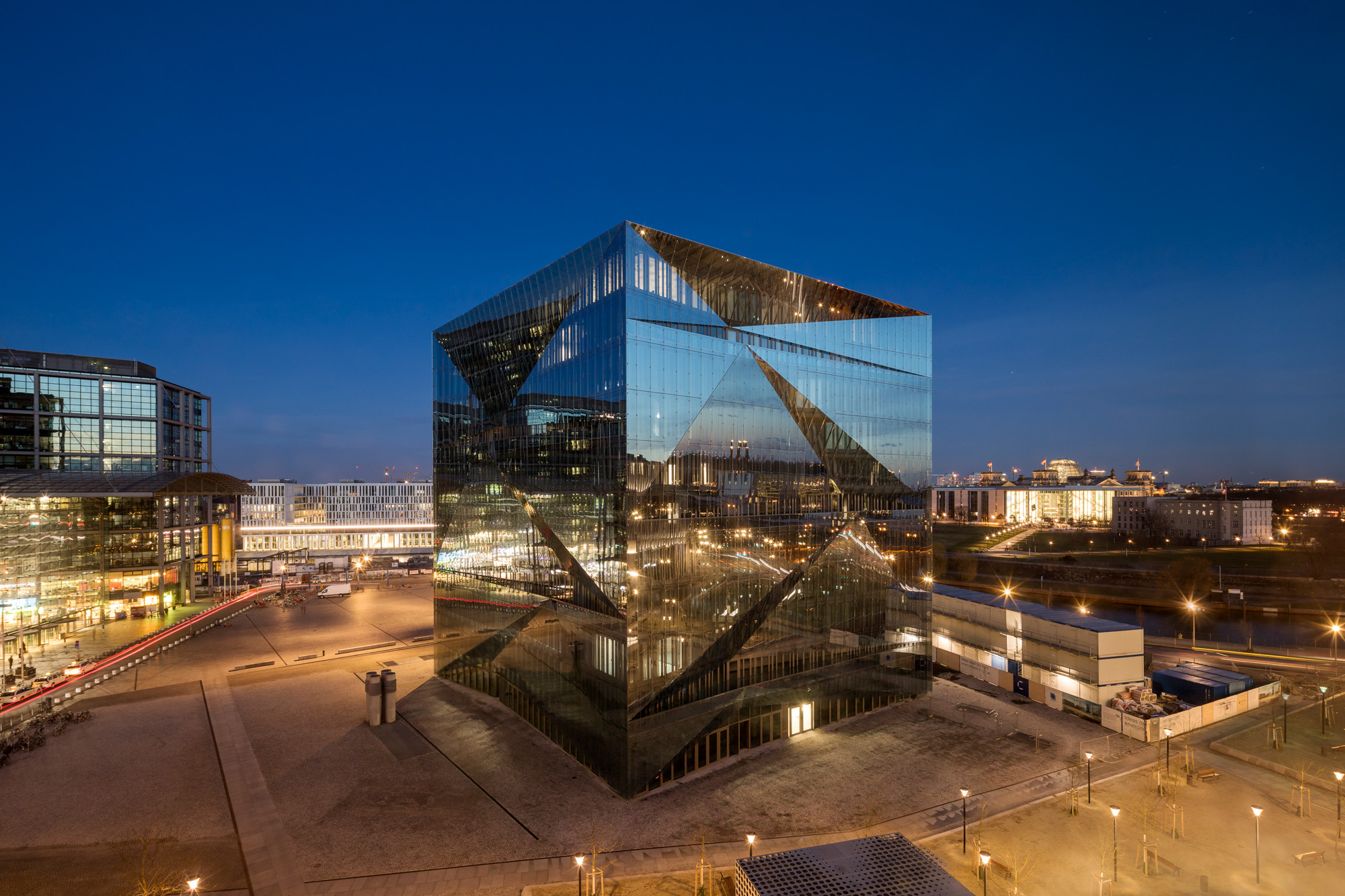
From the project’s architect’s, 3XN Architects, intention is to come up with the design concept that helps diversify the building’s architectural dimension. Despite its main purpose as an office building, the architecture is designed to express itself as an art form. The design facilitates interactions between the building and its surroundings with the glass skin that reflects the neighboring urban spaces into fascinating visuals and dimensions of its outer appearance. Meanwhile, the skin creates spatial experiences for users who are inside the building and looking out to Berlin’s cityscape.

This 10-story-high commercial building houses a variety of activities and functional spaces from offices, markets, parking spaces to rooftop floor, all facilitating a connection with the surrounding landscape. With the façade that is as high as 42.5 meters, the cubicle form is physically distinctive with the glass skin that clearly reveals the entire structure and interior. The curtain walls open the inside of the building to the scenic urban landscape, fully welcoming natural light into the interior function spaces.
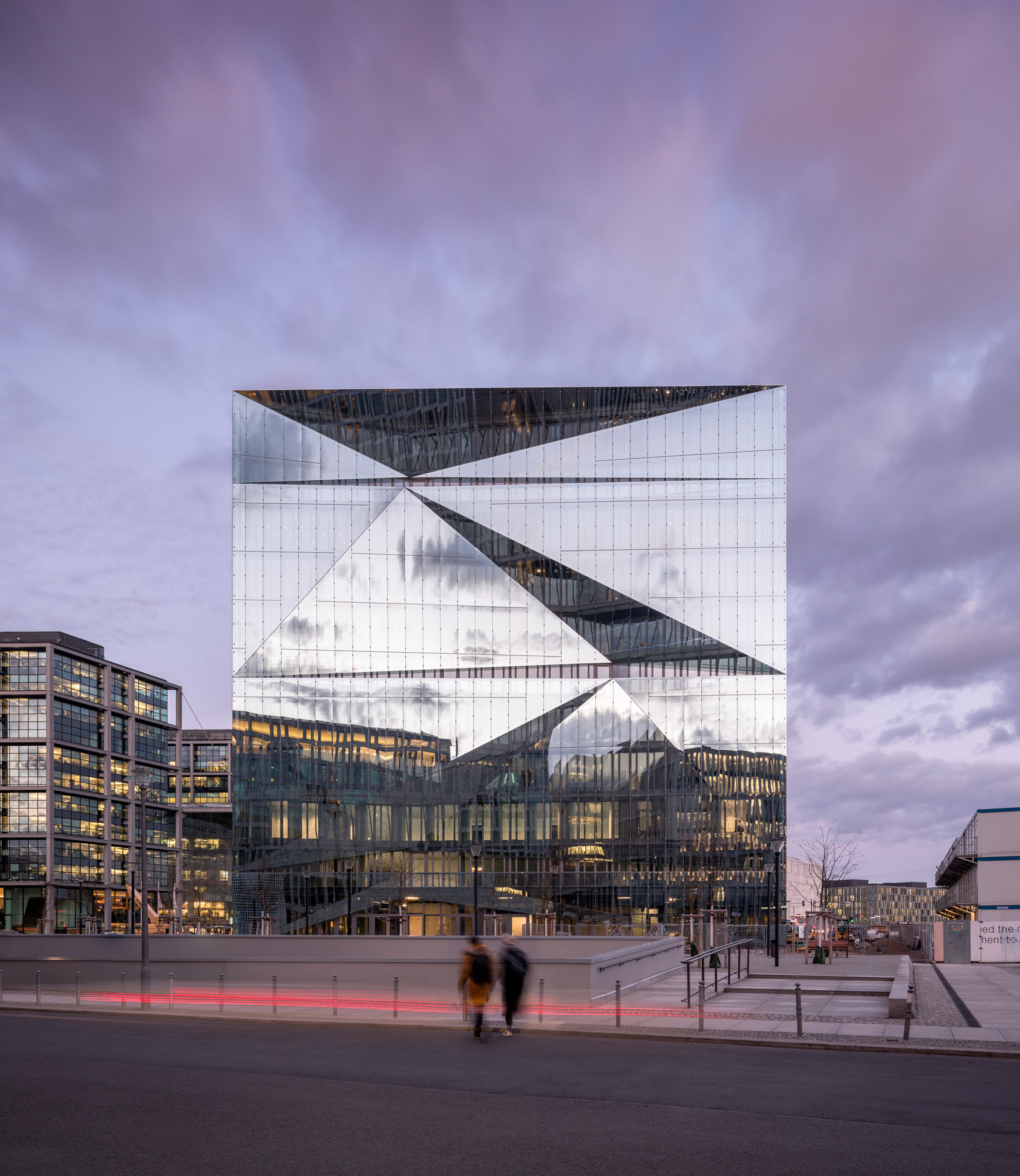
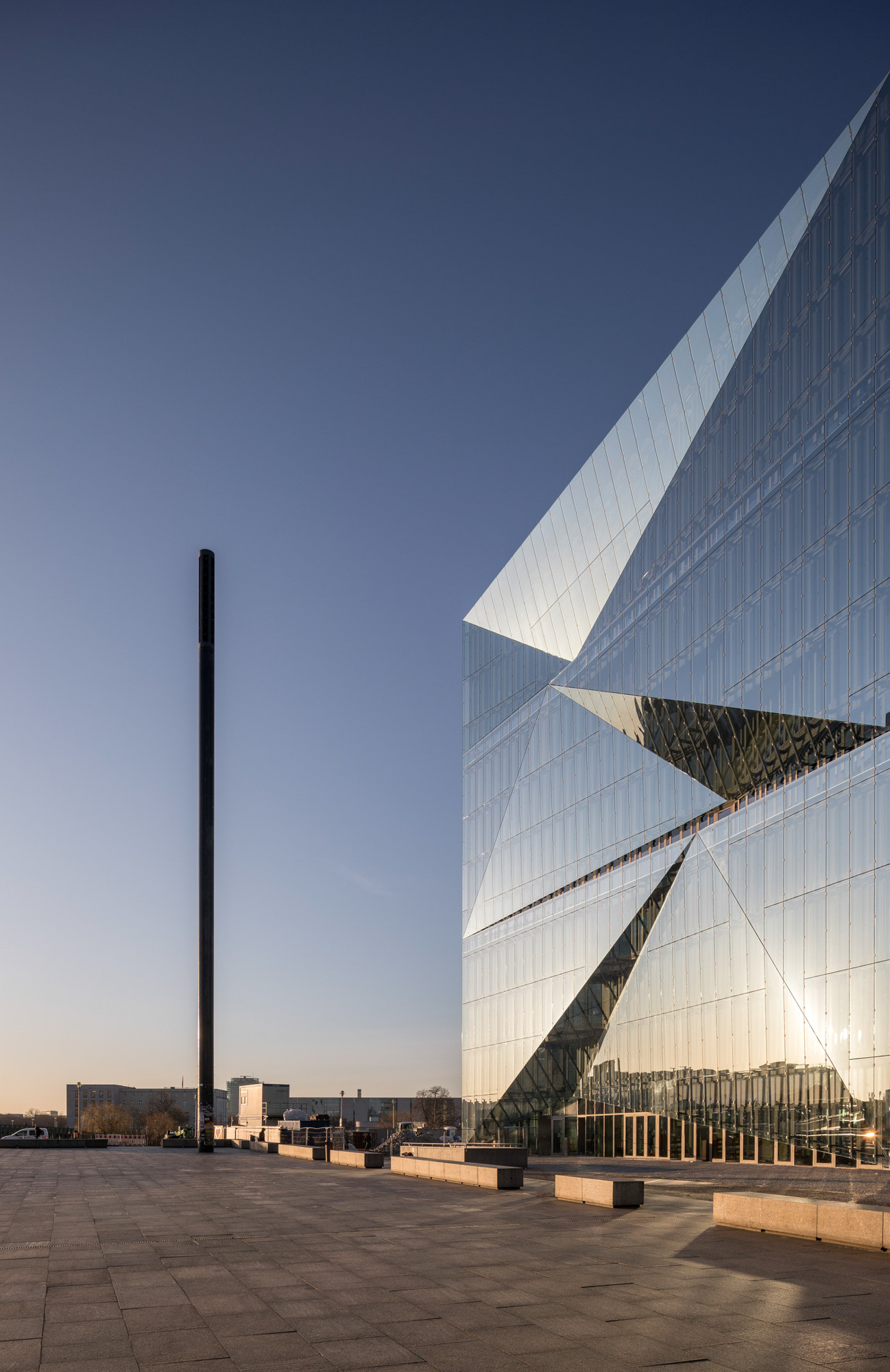
The façade contain details of faceted surface with angles that deviate in different directions, similar to a prism, attracting the interest of the passerby with eye-catching gimmick . The building skin is constructed with double-layered glass, accentuating architectural mass to appear even more dimensional. Functionally, the skin envelopes all the functional spaces and creates alternating configuration of the terrace placement on each floor, consequently facilitating a connection between the inside and the outside.
The exterior layer of the glass façade uses Climaguard Premium 2 and Sunguard High Durable Diamond 66, which hold a distinctive thermally reflective quality. The materials are coated with a substance that can effectively reflect sunlight, elevating the building’s image and abilities as a smart building, which is also project’s key concepts.


The smart building concept directly results in the architectural design’s efficient energy management, partially achieved through the physical characteristics of the glass skin. The skin allows the building to handle the outside heat and better control interior temperature, contributing to significant energy consumption reduction. While the facade is entirely built of glass, it does not forfeit the building’s energy efficiency, especially when accompanied by wholly integrated systems, which together take Cube Berlin to a new plateau of smart buildings, functionally and visually.
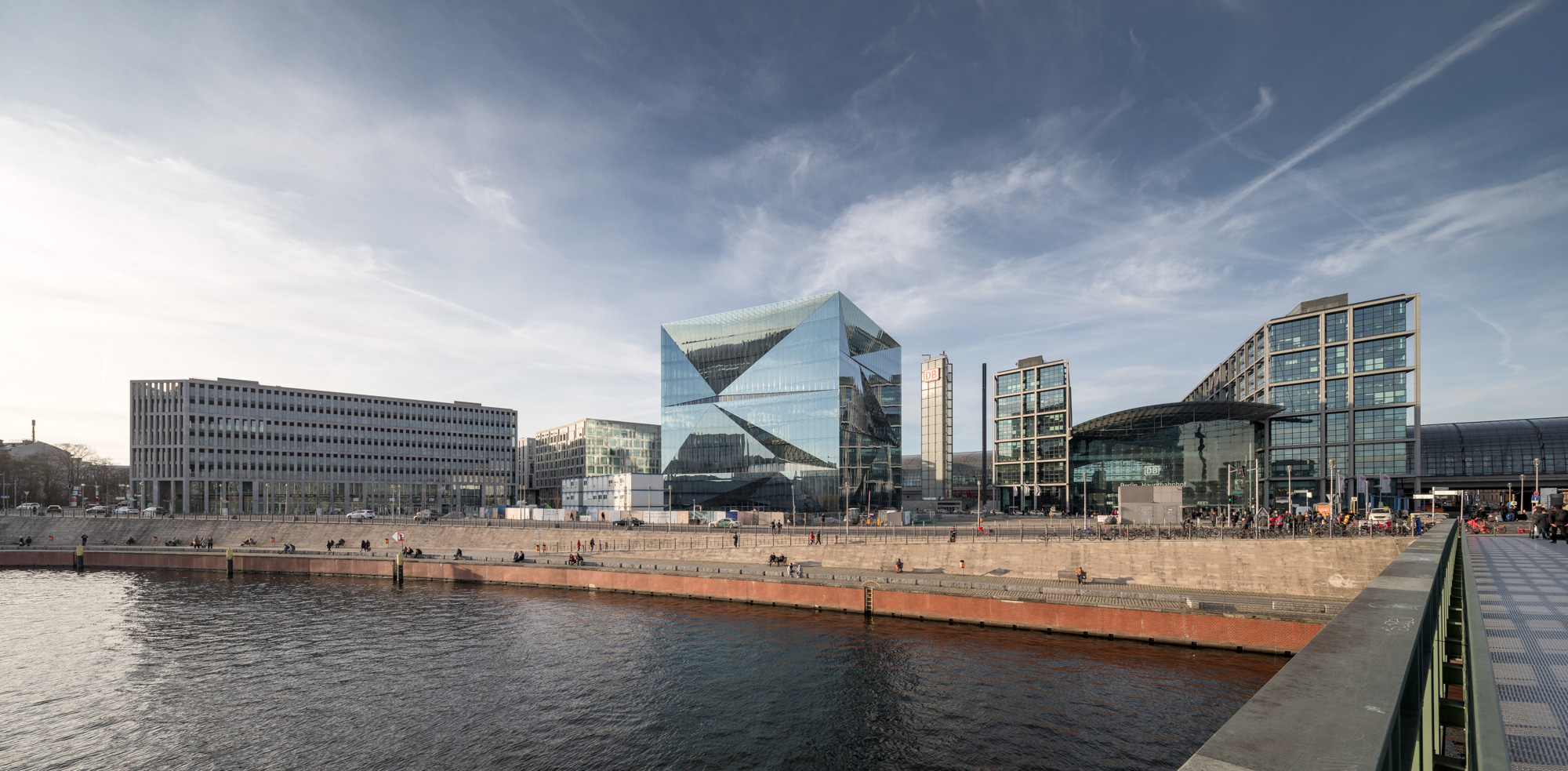
For further information you can contact our experts, by visiting us at:
Official Website / https://www.guardianglass.com/ap/en
Official Facebook / https://www.facebook.com/guardianglassap
Email / guardiansupport@guardian.com
ELBPHILHARMONIE HAMBURG | GUARDIAN GLASS

ELBPHILHARMONIE HAMBURG | GUARDIAN GLASS
HERZOG & DE MEURON TRANSFORMED THE OLD WAREHOUSE INTO ‘ELBPHILHARMONIE HAMBURG’ THE NEW LANDMARK OF HAMBURG, GERMANY THROUGH THE IMPLEMENTATION OF 3D CURVED GLASS FAÇADE FIRST DEVELOPED BY GUARDIAN GLASS AND THE ARCHITECT
TEXT: WARUT DUANGKAEWKART
PHOTO: CORDELIA EWERTH
(For Thai, press here)
The Elbphilharmonie, Hamburg, is one of the buildings known for its architectural splendour and its use of some of the world’s best acoustic systems. The project has the eminent and 2001’s Pritzker Prize laureates, Herzog & de Meuron, known for their masterful adaptation and reappropriation of the old and the new for their architectural creations.

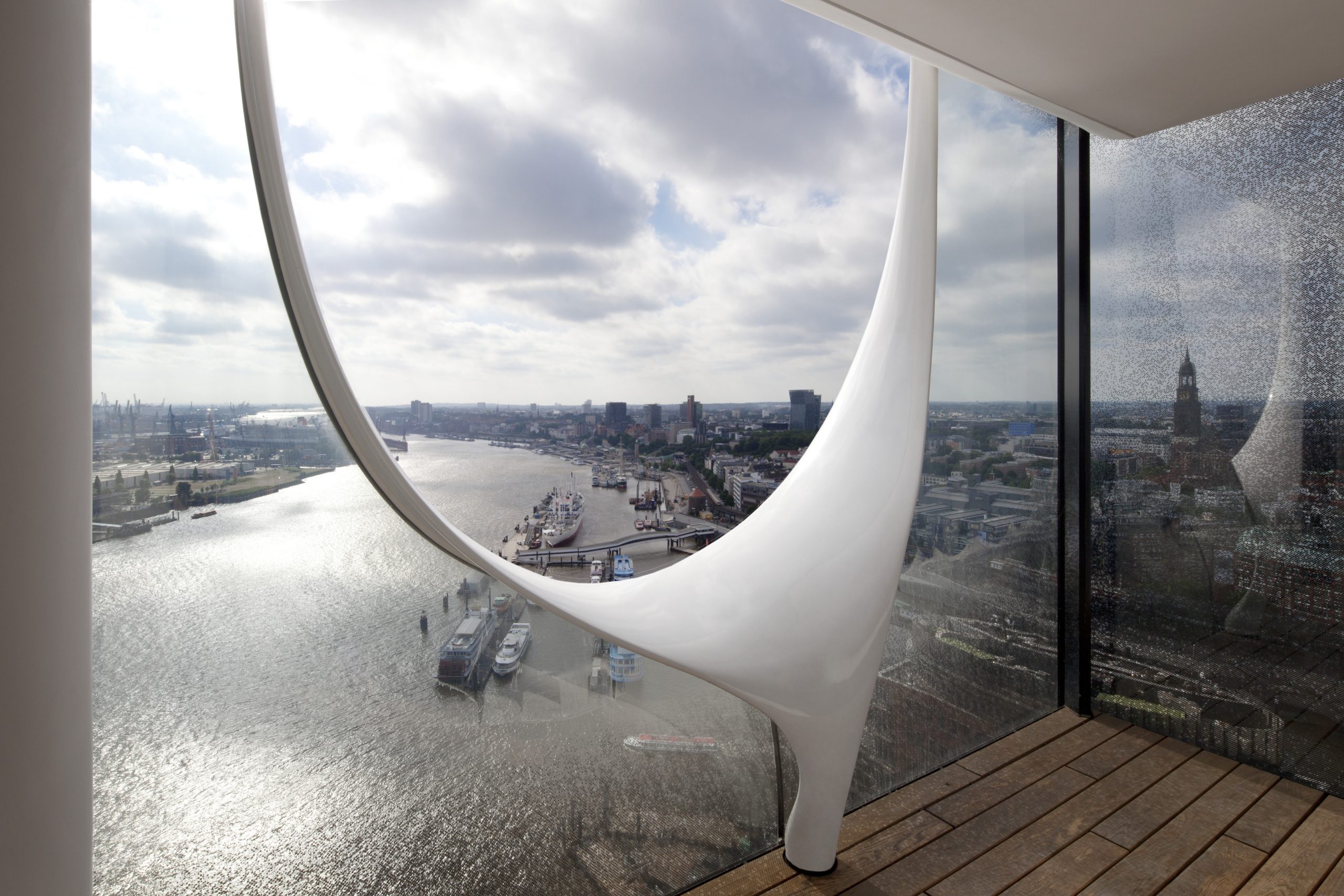
What’s particularly interesting about the project isn’t just its captivating appearance and advanced technologies that are employed but also the historical narrative and context of the location, especially the old building in which the program is sited. Originally, the space was home to a government-owned warehouse (Kaispeicher). The government later initiated an idea to develop the building and the area into a new city center, housing a program of diverse public spaces, urban and cultural activities. The design takes a conservation approach by keeping the old warehouse building as the base of the newly constructed addition, and creates an intriguing fusion that merges the old brick structure to the new architecture where glass is used as a principal material. At the lower portion of the structure, function spaces are connected, embraced and run through the old warehouse’s space before the program leads up to the diverse functional areas on the upper floors, such as a concert hall, restaurants, bars, an apartment complex, a hotel including the rooftop overlooking the spectacular view of the city and its harbour.


The essence of the project is, however, the glass addition sitting on the top of the brick warehouse. Designed with the aesthetic merits that coincide with the functional program of the concert hall, the building’s dynamic materiality and surfaces render emotional responses with users. The spirit of Hamburg as a harbour city is expressed through the facade’s form and details that take inspiration from the sails of a ship and natural attributes of waves. It is far from common to see glass being used in its varying bent and curved forms to create a three-dimensional curved facade with the expansive 5,000 square meter surface. The collaborative process between the design team and Guardian Glass granted the architects incredible creative freedom, successfully materialising possibilities and imagination into reality.
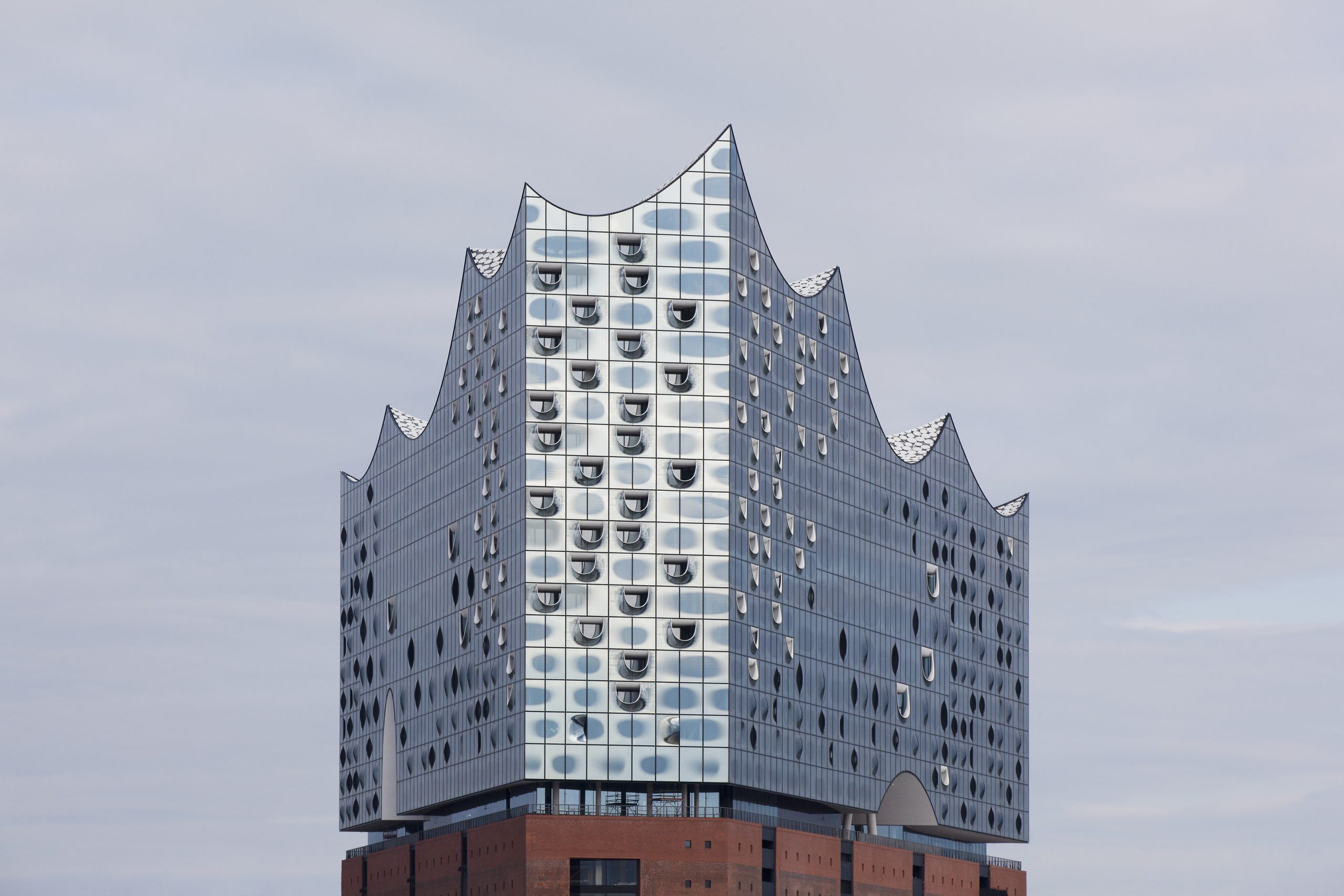
The complex three dimensional curved glass façade is interesting for it is the novel invention specifically developed for the project, through an extensive and detailed research that seeks for a way to preserve the aesthetic and functional qualities of each type of glass, from indoor temperature control, exterior heat prevention, etc. with models such as Extra Clear, ClimaGuard®, SunGuard® are used to keep the design the closest to perfection. Architecturally speaking, the development of material achieved in this project has enabled many promising possibilities for the future works of architectural design.
For further information you can contact our experts, by visiting us at:
Official Website / https://www.guardianglass.com/ap/en
Official Facebook / https://www.facebook.com/guardianglassap
Email / guardiansupport@guardian.com
MKM MUSEUM KÜPPERSMÜHLE EXTENSION
HAVING TRANSFORMED THE DEFUNCT RICE MILL INTO ‘MKM MUSEUM KÜPPERSMÜHLE’ IN 1999, HERZOG & DE MEURON HAS A HAND IN THE MUSEUM ONCE AGAIN WITH THE ADDITION OF THE EXHIBITION SPACE THAT ASPIRES TO KEEP A BALANCE BETWEEN OLD AND NEW


